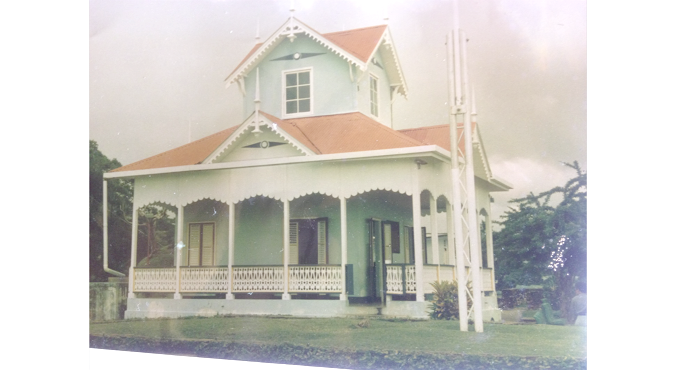
Prince Kofi Nti of Asante and Trinidad
Historians generally agree that for many ex-colonial Third World nations, important aspects of their histories remain ‘invisible’ and also as ‘underground’ history. To rectify this, biographies have proved useful in capturing the facts and tone of era and allow inferences to be made.
Advertisement
I, therefore, present below a biography of Prince Kofi Nti of Asante who has been ‘invisible’ and whose story illustrates the nature of our challenges.
One of the conditions imposed on Asante after the War of 1874 was that Britain was to take two of the sons of King Karikari of Asante to be ‘educated in British culture and civilisation.’ The boys were subsequently taken to England where one of them soon succumbed to tuberculosis. This death influenced the British to find a safer place of exile for the remaining Asante Prince, William Kofi Nti, in Trinidad in the West Indies.
When the Prince arrived in Trinidad, he had been preceded by a fair amount of sympathy for the Asante Kingdom. The First West India Regiment, which was camped at the St James Barracks, Port of Spain, had participated in the War of 1874. This caused the war to be followed closely by the newspapers in the island. The New Era, a local paper, wrote that nearly all the English press “. . . The Times not excepted, . . . condemned the war as unjustifiable . . . .” In another issue, the paper explained that the British had imposed the war upon Asante because the British did not want to pay tribute to Asante after acquiring Elmina, an ancient tributary state of Asante.
On arrival in Trinidad, the young Prince was placed under the care of Mr James Henry Collins, the Headmaster of the Boys Model School at Tranquility, Port of Spain. L.O. Innis wrote that the Prince was small in stature, dark and attracted a curious crowd wherever he went. He joined the Public Works Department as a draughtsman and worked on many building sites, particularly in the capital city. His popular name was the ‘The Black Prince.’ He socialised with the elite on the island and when the two sons of the Prince of Wales, Princes Edward and George, visited the island, he was part of the festivities.
Lighthouse
History states that Kofi Nti designed the Signal Station (Lighthouse) that still stands atop Fort George on the hills to the west of Port of Spain, the capital. The fortifications were built with African slave labour in 1802. Historical accounts had it that when the Signal Station was completed, Prince Kofi Nti embossed at the four corners of the building his initials ‘W.K.N’. But these were subsequently erased by the director of Public Works. The building is said to be one of the finest of its kind - visually pleasing, strong and enduring.
The Prince remained in Trinidad until 1886. These years saw vibrant ethnic African communities rise across the Caribbean. Unfortunately, there is no record of how the Prince related to these communities. From 1844 to about 1864, there was a massive migration of Africans from Liberated African communities in Sierra Leone into the island that invigorated the old African communities. The work of the Prince in the Public Works Department must have brought him into contact with many ‘tribal’ Africans.
The Yoruba settlements in the hills overlooking the capital, hosted Orisha ceremonies led by drums and chak-chaks. The Akan groups in Sangre Grande invoked Kormantyne Kodjo, their deity. The Mandingo (a.k.a. ‘Mandinka’, who were actually mainly Hausa and Fulani) lived in Port of Spain. Some of them were reputed to be as wealthy as any of the rich white ruling elite. The group’s reputation was that as Muslims, they had, through collective effort, bought the freedom of every Muslim slave on the island before the Emancipation Proclamation of 1833.
The Ewe were known as ‘Rada’. Their main korme (Quarters) was in Belmont where they were led in vodun ceremonies by Agbojevi (Robert Antoine), assisted by Kunu, Padonu and Alorkasu. They won victories in Court in the 1880s that permitted them to worship in peace. Prince Kofi Nti’s Trinidad of the 1880s was very cosmopolitan; but the ethnic West African communities held their own. The inherited history is silent on the details of the life of the Prince in this vortex.
Kofi Nti left Trinidad for good in July 1886 for Sierra Leone. When his ship stopped over in Barbados, it was reported that; ‘ . . . there was excitement throughout the island.’ On arrival in Sierra Leone, he was appointed Interpreter to King Prempeh and his court during their stay in Sierra Leone on their way to Seychelles to start their long exile. The relationship between Kofi Nti and the Asante Royals quickly turned sour. While he complained that the Royals were not keen to adopt English ways, they charged that Kofi Nti could hardly speak the Asante language.
Prince Kofi Nti later went to live in England where he died. In Trinidad, to this day, his Signal Station has been maintained as a tourist centre complete with a plaque in his honour. This memorial stands 1,120 feet above sea level atop a fortification that was built by enslaved Africans. Both the Signal Station and the Fort celebrate African resilience and determination and remain a testimony to ennobling African reactions to enslavement and colonialism.



